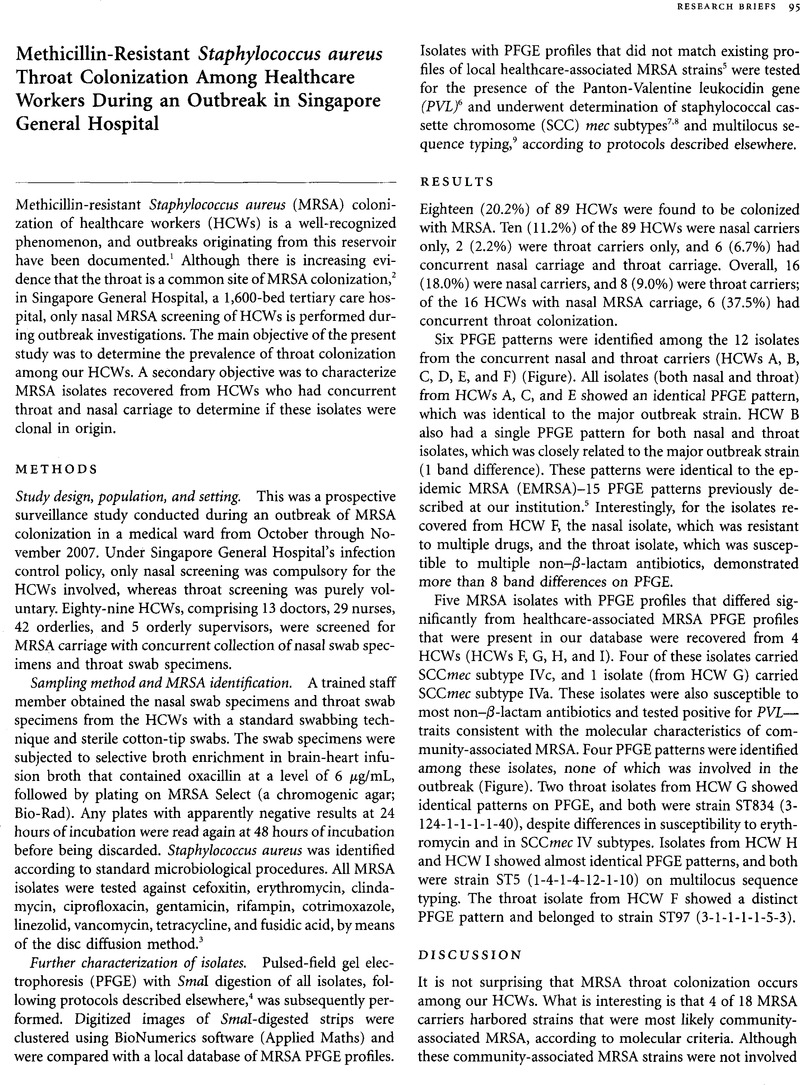Crossref Citations
This article has been cited by the following publications. This list is generated based on data provided by Crossref.
David, Michael Z.
and
Daum, Robert S.
2010.
Community-Associated Methicillin-ResistantStaphylococcus aureus: Epidemiology and Clinical Consequences of an Emerging Epidemic.
Clinical Microbiology Reviews,
Vol. 23,
Issue. 3,
p.
616.
Hawkins, G.
Stewart, S.
Blatchford, O.
and
Reilly, J.
2011.
Should healthcare workers be screened routinely for meticillin-resistant Staphylococcus aureus? A review of the evidence.
Journal of Hospital Infection,
Vol. 77,
Issue. 4,
p.
285.
Fisher, D.
Tambyah, P.A.
Lin, R.T.P.
Jureen, R.
Cook, A.R.
Lim, A.
Ong, B.
Balm, M.
Ng, T.M.
and
Hsu, L.Y.
2013.
Sustained meticillin-resistant Staphylococcus aureus control in a hyper-endemic tertiary acute care hospital with infrastructure challenges in Singapore.
Journal of Hospital Infection,
Vol. 85,
Issue. 2,
p.
141.
Win, Mar-Kyaw
Soliman, Tarek Abdellatif Aly
Lee, Linda Kay
Wong, Chia Siong
Chow, Angela
Ang, Brenda
Roman, Carrasco L.
and
Leo, Yee-Sin
2015.
Review of a two-year methicillin-resistant Staphylococcus aureus screening program and cost-effectiveness analysis in Singapore.
BMC Infectious Diseases,
Vol. 15,
Issue. 1,
Lim, Wey Wen
Wu, Peng
Bond, Helen S.
Wong, Jessica Y.
Ni, Kaiwen
Seto, Wing Hong
Jit, Mark
and
Cowling, Benjamin J.
2019.
Determinants of methicillin-resistant Staphylococcus aureus (MRSA) prevalence in the Asia-Pacific region: A systematic review and meta-analysis.
Journal of Global Antimicrobial Resistance,
Vol. 16,
Issue. ,
p.
17.





